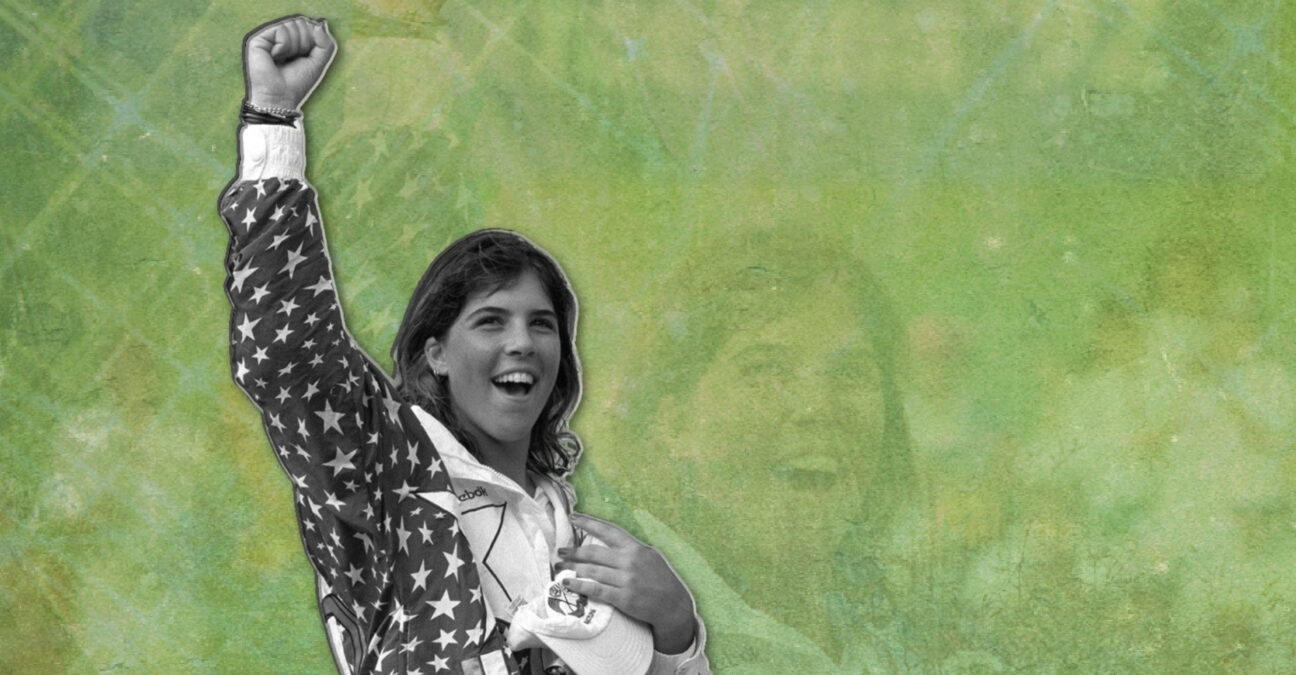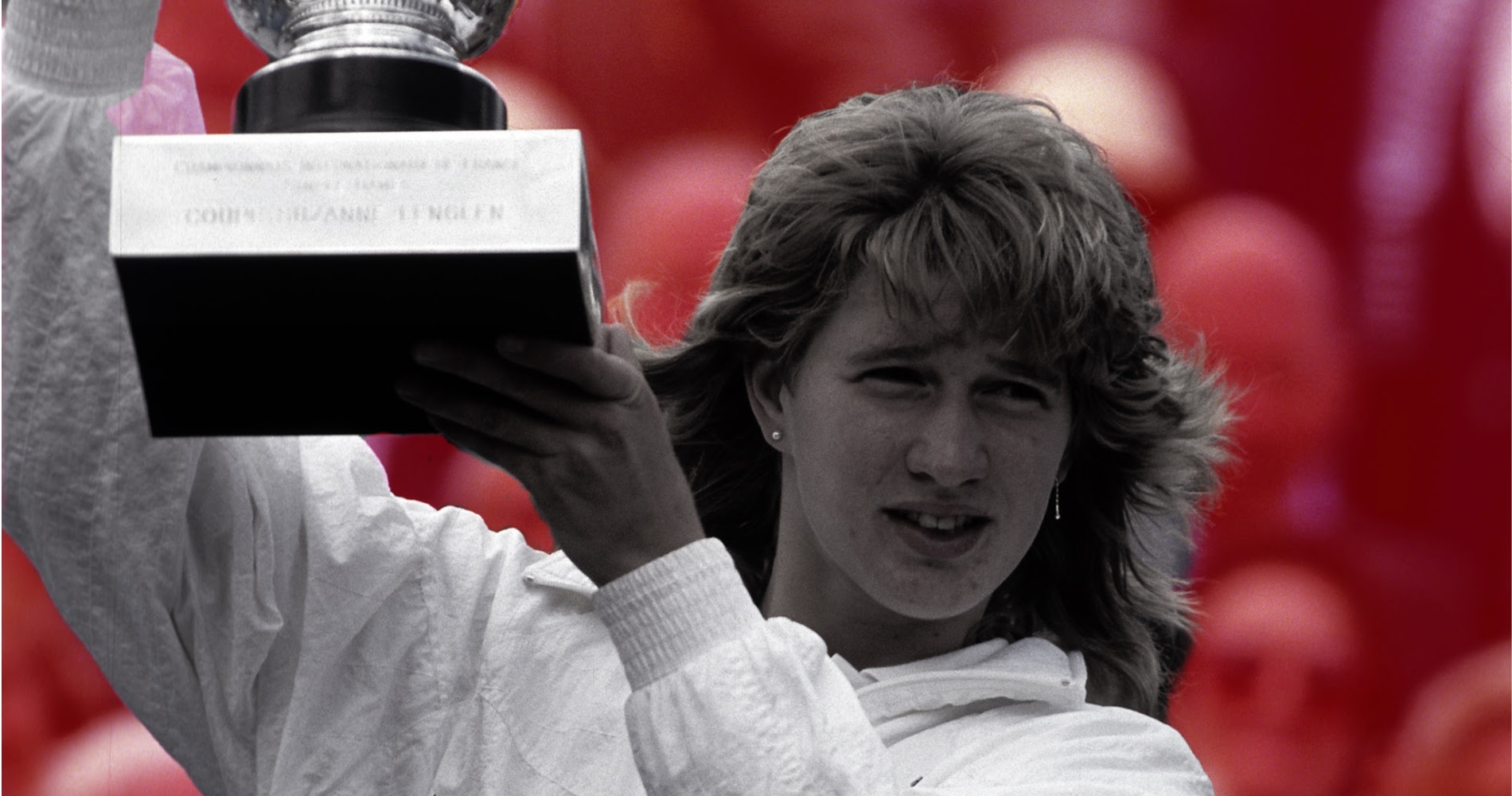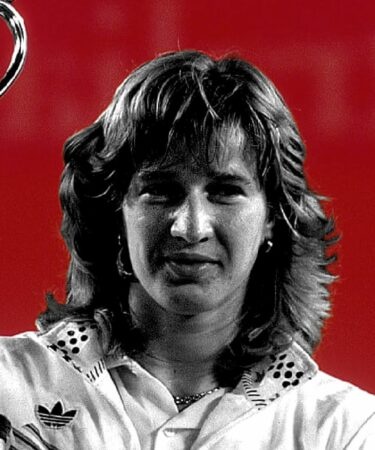August 7, 1992: The day 16-year-old Jennifer Capriati beat Steffi Graf to win the Olympic Gold in Barcelona
Every day Tennis Majors takes you back in time to celebrate a great moment in tennis history. Today, we go back to 1992 to witness how Jennifer Capriati became the youngest female player to ever triumph at the Olympics
 Capriati 1992 Olympics
Capriati 1992 Olympics
What exactly happened on that day?
On this day, August 7, 1992, 16-year-old Jennifer Capriati defeated world No 2 and defending champion Steffi Graf (3-6, 6-3, 6-4) to win the gold medal at the Barcelona Olympic Games. It was the first major title claimed by the American prodigy, and it would also remain the only one for almost a decade, until her triumph at the 2001 Australian Open. Until this day, she remains the youngest player to hold an Olympic gold medal in tennis.
Female Olympic gold medalists at tennis, by age, since tennis was reintroduced in 1988
- Jennifer Capriati, 16 years old, 1992
- Steffi Graf, 19 years old, 1988
- Lindsay Davenport, 20 years old, 1996
- Venus Williams, 20 years old, 2000
- Zheng Qinwen, 21 years old, 2024
- Justine Henin, 22 years old, 2004
- Monica Puig, 22 years old, 2016
- Belinda Bencic, 24 years old, 2020
- Elena Dementieva, 26 years old, 2008
- Serena Williams, 30 years old, 2012
The players: Jennifer Capriati and Steffi Graf
• Jennifer Capriati: The American teenage prodigy
Jennifer Capriati was born in March 1976, in Long Island, New York. In 1986, her family moved to Florida, where, following the instructions of Chris Evert’s father, Jimmy, she became a tennis prodigy. Her very powerful groundstrokes were quite revolutionary in women’s tennis. At 13, she won the junior event at Roland-Garros, and she turned pro the next year, before she was even 14.
In March, Capriati reached the final of her first WTA tournament, in Boca Raton, where it took world No 2 Gabriela Sabatini (6-4, 7-5) to stop her. A few weeks later, in Charleston, she defeated world No 5 Arantxa Sanchez (6-1, 6-1) and finished runner-up to Martina Navratilova (6-2, 6-4). Already ranked No 24, Capriati then became the youngest player to ever reach the final four at the French Open, where she eliminated world No 8 Mary Joe Fernandez before losing to Monica Seles (6-2, 6-2).
The following year, Capriati reached the semi-finals at both Wimbledon and the US Open, but in 1992, although she reached the quarter-finals at the Australian Open and at Roland-Garros, she seemed close to a burnout. Her school grades deteriorated at the same time as did her relationship with her parents, and her father, Stefano, was accused of pushing her too hard. In August 1992, the American was ranked No 6 in the world.
• Steffi Graf: The 11-time Grand Slam champion now ranked No 2 in the world
In August 1992, Steffi Graf was ranked No 2 in the world, behind Monica Seles. With her game based on a powerful forehand which she could fire in any direction, legendary footwork and a top-notch backhand slice to neutralize her opponents, the German had previously been sitting on top of the WTA rankings without interruption between 1987 and 1991. Graf completed an incredible Golden Grand Slam in 1988, claiming the Olympic gold medal on top of the four Grand Slam crowns, a unique achievement in tennis history.
At the age of 23, the German already held 11 Grand Slam titles, and, although Seles had edged her in the final of the last edition of Roland-Garros (6-2, 3-6, 10-8), Graf had just shown that she was not to be forgotten, taking her revenge upon her biggest rival in the Wimbledon final (6-2, 6-1).
The place : Tennis de la Vall d’Hebron, Barcelona
The 1992 Olympic Games were held in Barcelona at the Tennis de la Vall d’Hebron, which had been renovated in 1991 for the occasion. There were 17 tennis courts at the venue, and five of these were used for the competition.
The facts: Capriati had never beaten Graf in four previous tries
In August 1992, although she was only 16 years old, Jennifer Capriati, the youngest player to have ever reached the semi-finals of a Grand Slam event, at the age of 14, was already on the verge of a burnout. Her outstanding results at such a young age had put tremendous pressure on the teenager’s shoulders, and even though her latest results places her at No 6 in the world rankings, she was expected to do better. Her relationship with her father, Stefano, deteriorated as he was accused of pushing her too hard, and in March 1992, he hired Steffi Graf’s former coach, Pavel Slozil, in order to take a step back.
“Right now she needs me as a father, not as a coach,” he told Sports Illustrated at the time. Slozil was fired in April. Capriati had reached at least the quarter-finals of the last five Grand Slam tournaments, but she had never qualified for the final, and she was desperate for a first major success. She prepared for the Barcelona Olympic Games, which were held on clay, with a Spanish coach, Manolo Santana, and, with a new-found consistency, she stormed through her early rounds, until the semi-finals, where she defeated world No 3, Arantxa Sanchez-Vicario (6-3, 3-6, 6-1).
In the final, she faced Steffi Graf, whom she had never defeated in four previous encounters. The German, who had lost her No 1 throne in 1991 to Monica Seles, had just triumphed at Wimbledon, and, in the absence of her greatest rival, she was the top seed at the Olympics. After her close loss to Seles in the Roland-Garros final, the Germna’s success in London reminded everyone that she was still only 23 and that she didn’t intend to give up her fight for major titles or the world No 1 ranking. Graf made her way into the final without dropping a single set and was the heavy favourite.
The German started magnificently to win the first set 6-3, but in the second set, Capriati improved her level and stopped donating free points. Graf’s forehand, her trademark weapon, wasn’t as lethal as usual. Graf lost her patience and uncharacteristically missed 48 forehands throughout the final. The American leveled the game by taking the second set 6-3.
The decider began with both players being broken in their first service game. At 4-4, Graf rallied back from 0-40, but she was finally broken, and a few minutes later, the German netted one last forehand, which made Jennifer Capriati the new Olympic champion.
“She was very steady from the baseline and she didn’t give me a lot of errors like she sometimes does,” said Graf, according to The New York Times “She was patient, which I wasn’t.”
Capriati, who despite her young age, had just claimed a long-awaited first major title, felt very emotional during the trophy ceremony.
“It was so emotional. I had the chills the whole time. I just can’t believe it. All week I watched the other athletes up there and I was with them and I thought, ‘Wow, that would be so cool.’
What next? Capriati steps away from the game but returns to become Grand Slam champ and world No 1
Unfortunately, Capriati’s struggle to handle the pressure put on her shoulders by the media only increased in the following months and in 1994, she would even quit tennis temporarily. Back on the tour in 1996, she would not achieve any remarkable results until the 2000 Australian Open, where she would reach the semi-finals. This would be the start of a new career: from 2001 to her retirement in 2004, Capriati would never leave the top 10 again, claiming three Grand Slam titles (the Australian Open in 2001 and 2002, Roland-Garros in 2001), and reaching the semi-finals no less than six times. In October 2001, Capriati would become world No 1, a spot she would hold for 17 weeks.
After Monica Seles’s tragic stabbing in 1993, Graf would recover the top spot until 1997, setting a new record of 377 weeks spent as world No 1. By winning the 1995 US Open, she would become the only woman in history to win each of the four Grand Slam titles at least four times. When she would retire in 1999, soon after claiming her last major crown in Roland-Garros, she held an incredible total of 22 Grand Slam tournaments (the most in the Open Era at the time, which was bested by Serena Williams who ended her career with 23 Majors)














